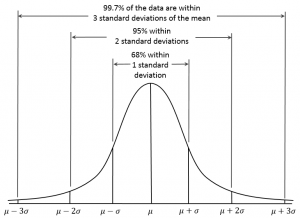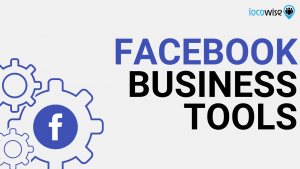How do you turn traffic into converting customers? Columnist Stoney deGeyter outlines how you can improve your visitors’ experience both before and after they arrive on your site.

One of the primary goals of web marketing is to drive new, targeted traffic to the website. Today, we have so many avenues to generate traffic, it’s ridiculous.
Search engines are still a significant driver, but social media is catching up as a resource businesses are using to build their brand, establish an audience and bring people to the site who aren’t necessarily out there searching for your product or service — but will use it nonetheless.
But driving traffic to the website is just one component of successful web marketing. The whole other side of that is what happens after the visitors arrive.
Targeted traffic — while much better than non-targeted traffic — doesn’t automatically convert into customers. Yes, they are more likely to convert than non-targeted visitors, but that is by no means guaranteed — or even likely, in many cases.
Your job is to take the (targeted) traffic you’re already getting and figure out how to get them to become customers.
But let’s take a step back first. Because turning targeted traffic into customers starts before you even get the traffic.
Choose converting keywords/topics
There are two kinds of targeted visitor: those who are ready to become a customer and those who are not. The trick is knowing which is which.
The same general keyword can bring in both types of traffic. If you get people to your website before they’re ready to buy, there is a small chance you can get them back later once they are. But if you want to increase your conversions, you want to focus more heavily on those who are already ready to buy.
Now, typically, the traffic of those ready-to-buy visitors is smaller, but they also require less effort to convert.
This is where keywords matter a great deal. A searcher looking for a “motorcycle” isn’t as ready to buy as someone searching for a “2015 honda gold wing.” The differences in search volume are spectacular, favoring the single word.
But once you factor in all the years, makes and models of all the motorcycles you (proverbially) sell, you’re looking at significant numbers of ready-to-buy searchers, ready to make their way to your site.
Too frequently, businesses want to focus on those high-volume keywords. And yes, you will get sales from those as searchers quickly move from “research” to “ready-to-buy” phases.
But you’ll typically bring in a lot more money a lot more quickly if you focus on an audience that’s ready to convert rather than one that’s not.
Compelling (and accurate) titles/description

Focusing on keywords allows you to achieve some top rankings for the ready-to-convert audience. But you still have to get that targeted audience to your website. To do that, you have to compete against all the other sites appearing on the page near the search result for your site.
In the race to get clicks from the search results, you have three tools at your disposal:
- The ranking itself. The higher up you are, the more likely you are to get visitors.
- The title tag that search engines typically use as the clickable link to your site.
- The meta description that search engines typically display below the title.
Those two links above will give you a complete overview of how to use these two tags, but suffice it to say that they are significant factors in bringing that targeted traffic to your website. A compelling title and description can often drive more traffic from a lower-ranking position than the sites ranked above it.
Match content to visitor’s need
Assuming, finally, that you got the click to your website, you still have a ways to go to turn that click into a conversion. For the rest of this post, we will focus on the visitor’s overall experience on the website and making sure that the site itself meets their needs.
The first step is to ensure you have the content that the searcher needs and expects. It all comes down to making sure that the content matches the intent behind the search.
Remember above we talked about searchers in different mindsets. Going back to that example, a search for “motorcycle” requires vastly different content than a search for “2015 honda gold wing.” One is looking for top-level information. They are in the early research phases. The other has likely done their research or is in the final stages of research and is getting ready to commit to the purchase.
If you deliver the “gold wing” searcher to a generic page about motorcycles, you’re going to lose them, because that’s not what they want. Similarly, if you deliver the “motorcycle” searcher on a page specific to Honda Gold Wings, you’ve given them content they are not ready for. In both cases, the content isn’t a match for the searcher’s intent.
Yes, you have targeted traffic, but failure to deliver the right content to the right visitor severely reduces the likelihood that the visitor will turn into a customer.
Create value and build trust

Trust is a significant factor in the sales process. If your site fails at communicating the appropriate signals of trust, visitors will ultimately be more inclined to make their purchase elsewhere. When looking at two otherwise equal websites, the site that’s able to provide more trust signals wins.
Trust can come in many forms. Part of that has to do with the value of the content itself. If your content isn’t giving your visitors the information they need, they have no reason to trust that you’ll be able to deliver exactly what they want.
It all comes down to having the right content messaging throughout your site. Sites with little or no content have problems establishing that needed trust.
But it’s not just the content the searchers are looking for that matters; it’s other content throughout the site as well. A well-structured About Us page, comprehensive privacy and security policies, visible phone or other contact info and security assurances are all valuable components to building trust with your visitors.
A recognized brand name can help as well. You may never be Pepsi or Nike, but you can use social media to build up your own brand recognition. People tend to buy from sites they’re familiar with, even if it’s just something they saw shared by a social media connection.
Finally, perhaps the most important way you can build trust is to have your past customers build it for you. Make sure you have testimonials, not just on a testimonials page, but sprinkled throughout your site, even on product pages.
Reviews also are great content and help make potential customers feel secure. Don’t worry if some of the reviews aren’t glowing. If all the reviews are perfect, visitors may wonder if they’re authentic. If you’re providing quality products and services, the reviews will naturally skew positive.
Create a conversion process
Every site needs to have a process for moving visitors from landing page to the conversion point. Actually, there should be many such conversion processes.
A website is like a choose-your-own-adventure novel. A visitor lands on any one of dozens or hundreds of pages and needs to be given options of what to do next.
Every single page of a site should have a primary action that you want the visitor to take. It might be to “buy” or “call,” or it might be to move them to another content page that gets them closer to that buy point.
Once the goal is established, everything on the page must support that goal. The content, the images, and — most importantly — the calls to action. But there also need to be secondary goals, specifically for the visitors not ready to pull the trigger on the primary goal.
Determine what information the visitor needs, and make sure the content supports that. But then determine the next best courses of action and provide support to move the visitors to those actions.
While all actions ultimately lead to the big conversion, you may have to let visitors choose their own adventure to get there. Remember, without choices, the adventure ends.
You got it… Now convert it.
Not all traffic is created equal. The process for turning traffic into converting customers starts before the visitor even arrives on the website and continues until they have completed the sale.
You always need to be looking for ways to improve the visitor’s experience before and after they land on the website. Do that, and you can significantly increase your conversions without ever having to increase the number of visitors coming to the site.
Some opinions expressed in this article may be those of a guest author and not necessarily Marketing Land. Staff authors are listed here.
(Some images used under license from Shutterstock.com.)
Marketing Land – Internet Marketing News, Strategies & Tips
(108)
Report Post








